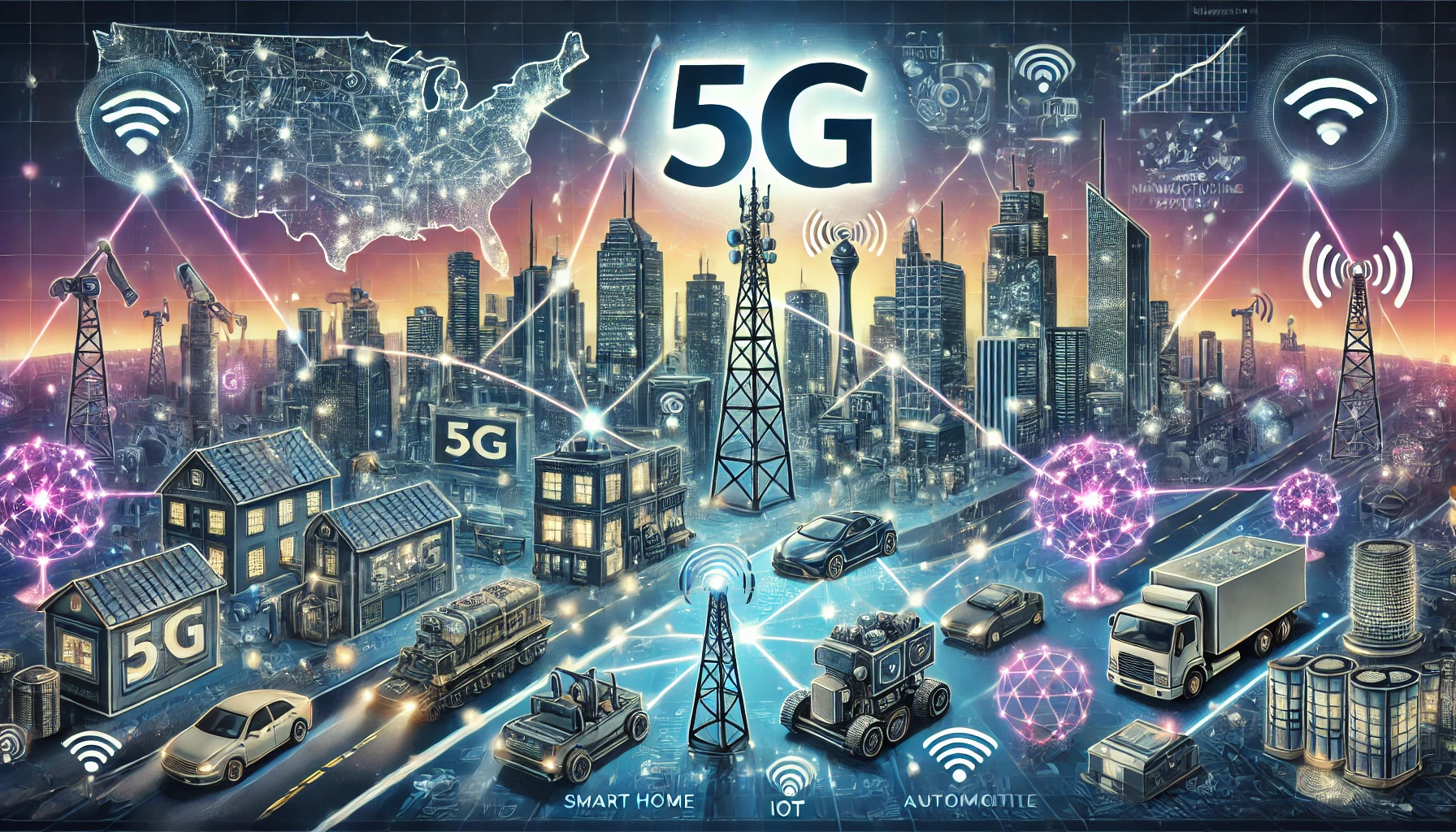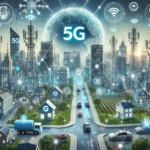Table of Contents
Introduction: Introduction to 5G Technology

The fifth generation of wireless technology, commonly known as The Impact of 5G Technology on Connectivity and IoT in the U.S.Introduction: Introduction to 5G Technology, represents a monumental leap in the evolution of mobile networks. Promising significantly faster speeds, lower latency, and greater capacity, 5G is poised to revolutionize connectivity and enable the proliferation of the Internet of Things (IoT) on an unprecedented scale. As the U.S. continues to roll out The Impact of 5G Technology on Connectivity and IoT in the U.S.Introduction: Introduction to 5G Technology infrastructure, understanding its impact on connectivity and IoT applications is crucial for anticipating the future of technology and industry.
Enhanced Connectivity: How 5G Improves Internet Speed and Reliability
- Faster Internet Speeds:
- Increased Bandwidth: 5G technology offers substantially higher data transfer rates, with speeds potentially reaching up to 10 Gbps. This means downloading a full-length HD movie can take seconds rather than minutes.
- Enhanced User Experience: The increased speed supports smoother streaming, quicker downloads, and more responsive online gaming, enhancing the overall user experience.
- Lower Latency:
- Reduced Delay: 5G reduces latency to as low as 1 millisecond, compared to 4G’s average of 50 milliseconds. This near-instantaneous communication is critical for applications requiring real-time responsiveness, such as augmented reality (AR) and virtual reality (VR).
- Improved Interaction: Lower latency enhances interactive experiences and enables more precise control in applications like remote surgery and autonomous driving.
- Greater Network Reliability:
- Enhanced Capacity: 5G can support a higher density of devices per square kilometer, ensuring reliable connections even in crowded areas like stadiums and urban centers.
- Consistent Performance: The technology’s robustness ensures consistent performance across various conditions, reducing service interruptions and maintaining connectivity.
IoT Expansion: The Role of 5G in Advancing IoT Applications
- Massive Device Connectivity:
- IoT Device Proliferation: 5G’s ability to connect a vast number of devices simultaneously supports the expansion of IoT ecosystems. This is crucial for smart cities, where millions of sensors and connected devices are deployed.
- Enhanced Communication: Improved communication capabilities allow IoT devices to transmit data more efficiently, facilitating better monitoring and control.
- Smart Home Integration:
- Seamless Automation: 5G enhances the performance of smart home devices, enabling seamless integration and control of various systems such as lighting, security, and HVAC through a unified platform.
- Real-Time Monitoring: The technology supports real-time monitoring and automation, enhancing energy management and security in smart homes.
- Industrial IoT:
- Factory Automation: In manufacturing, 5G enables advanced automation and real-time monitoring of production processes, increasing efficiency and reducing downtime.
- Predictive Maintenance: Enhanced connectivity allows for predictive maintenance, where sensors and AI analyze data to anticipate equipment failures and schedule timely repairs, minimizing operational disruptions.
Industry Applications: Sectors Benefiting from 5G
- Healthcare:
- Telemedicine: 5G supports high-quality video consultations, enabling remote diagnosis and treatment, especially crucial in rural areas with limited access to healthcare facilities.
- Remote Surgery: Low latency and high reliability allow for remote surgery, where surgeons can operate on patients from distant locations using robotic instruments.
- Transportation:
- Autonomous Vehicles: 5G provides the necessary real-time communication between autonomous vehicles and their surroundings, enhancing safety and efficiency.
- Smart Traffic Management: The technology enables smart traffic systems that monitor and manage traffic flow, reducing congestion and improving urban mobility.
- Entertainment:
- AR/VR Experiences: 5G enhances AR and VR applications, providing immersive experiences in gaming, virtual tours, and live events.
- Content Delivery: Faster speeds and lower latency improve content delivery services, supporting high-definition streaming and interactive media.
- Agriculture:
- Precision Farming: IoT devices connected through 5G can monitor soil conditions, weather, and crop health in real-time, optimizing farming practices and increasing yields.
- Automated Machinery: 5G enables the use of automated machinery for planting, harvesting, and monitoring, reducing labor costs and improving efficiency.
Challenges: Infrastructure and Adoption Barriers
- Infrastructure Development:
- Cost and Investment: Building 5G infrastructure requires significant investment in new equipment, including antennas, small cells, and fiber-optic cables. The high cost can be a barrier for widespread deployment.
- Geographic Coverage: Achieving comprehensive coverage, especially in rural and remote areas, presents a challenge due to the lower population density and higher costs per user.
- Regulatory and Spectrum Issues:
- Spectrum Allocation: The availability of spectrum for 5G use is limited, and regulatory challenges can slow down the allocation and deployment processes.
- Compliance: Ensuring compliance with various regulatory standards and addressing concerns about radiation exposure require careful planning and management.
- Adoption and Integration:
- Device Compatibility: Not all devices are 5G compatible, and the transition requires consumers and businesses to upgrade their existing hardware.
- Interoperability: Ensuring interoperability between different 5G networks and IoT devices is crucial for seamless operation and user experience.
Conclusion: The Future of 5G in the U.S.
The advent of 5G technology is set to transform connectivity and drive the growth of IoT applications across various sectors in the U.S. With its promise of faster speeds, lower latency, and greater capacity, 5G will enhance user experiences, improve efficiency, and enable innovative solutions. However, overcoming infrastructure, regulatory, and adoption challenges will be essential to realizing its full potential. As the U.S. continues to invest in and develop 5G networks, the technology will play a pivotal role in shaping the future of connectivity and IoT.







